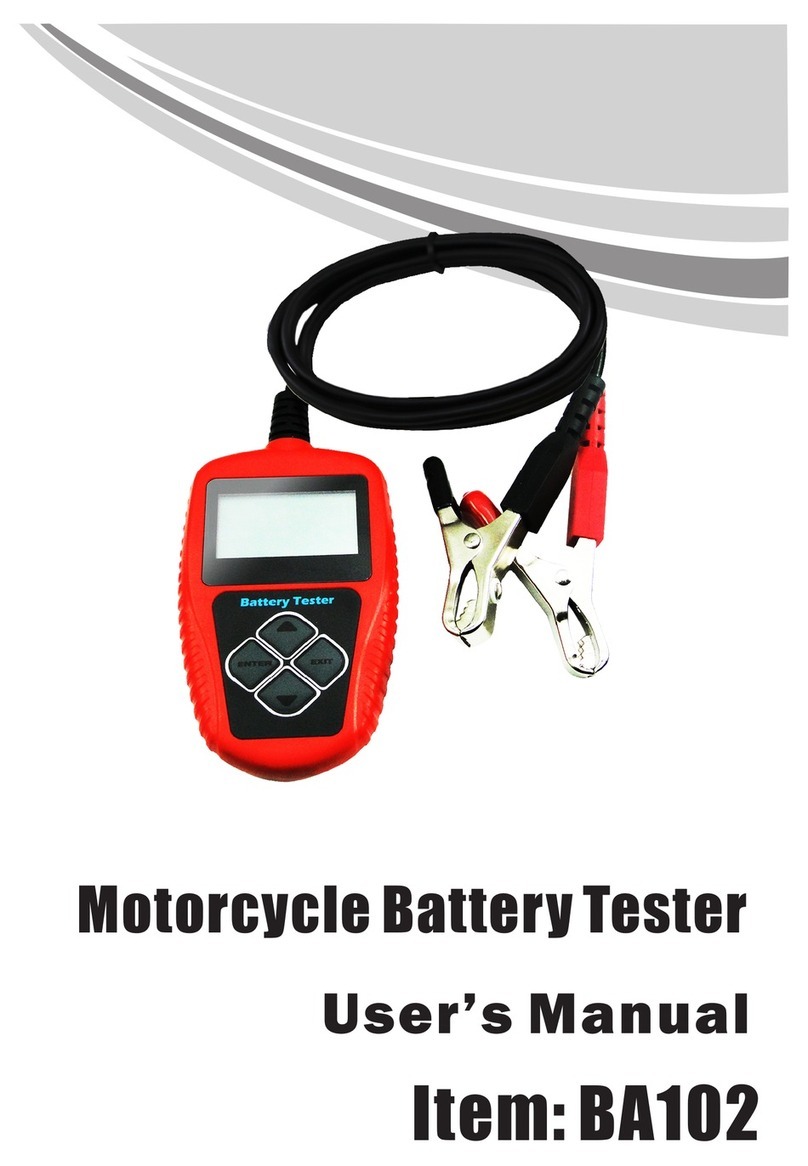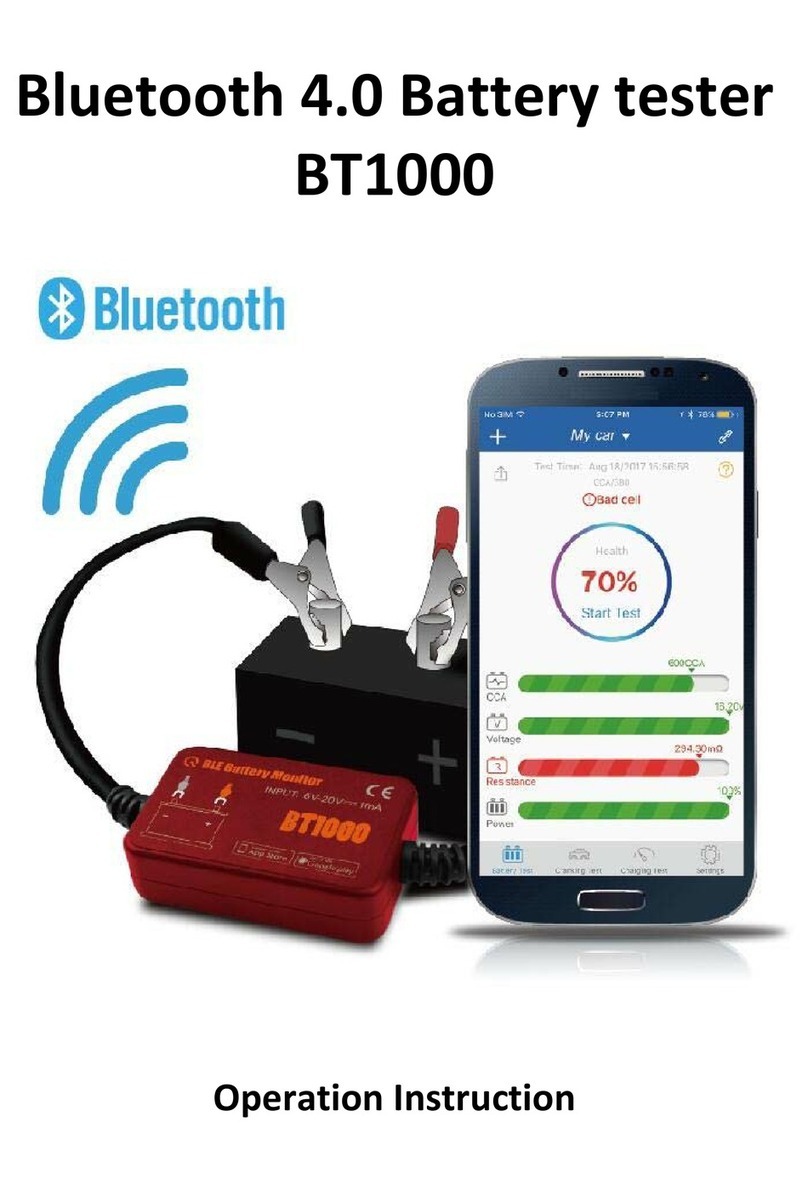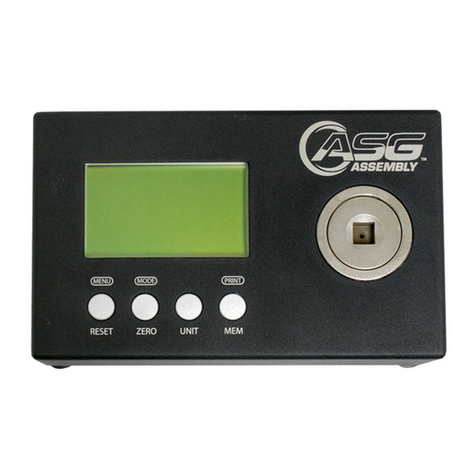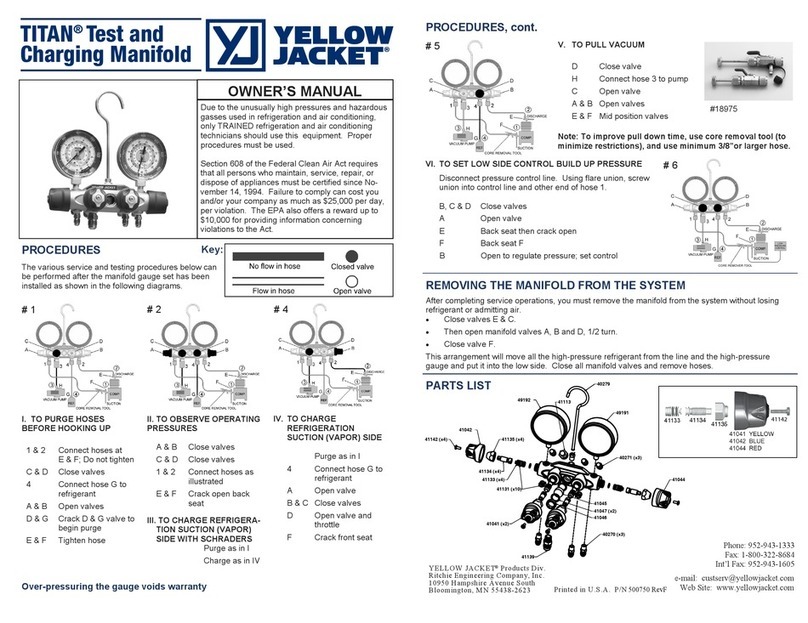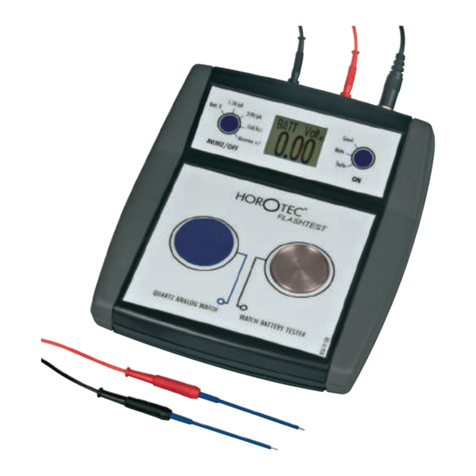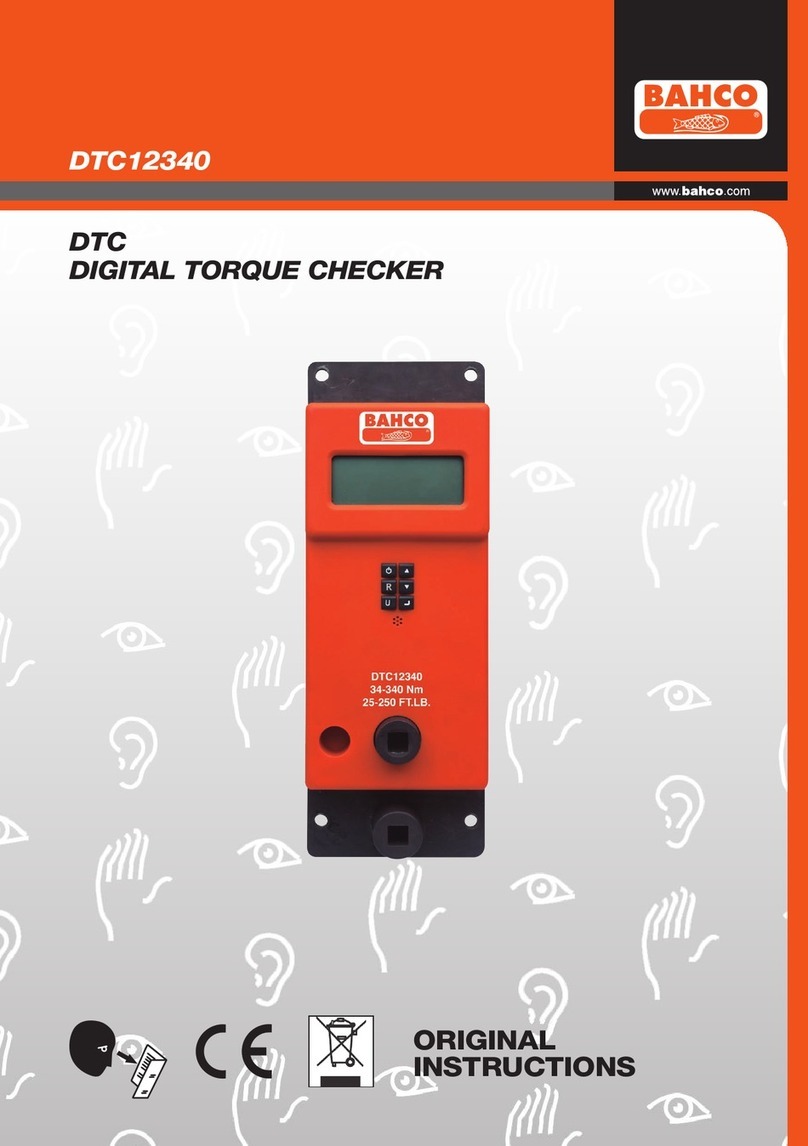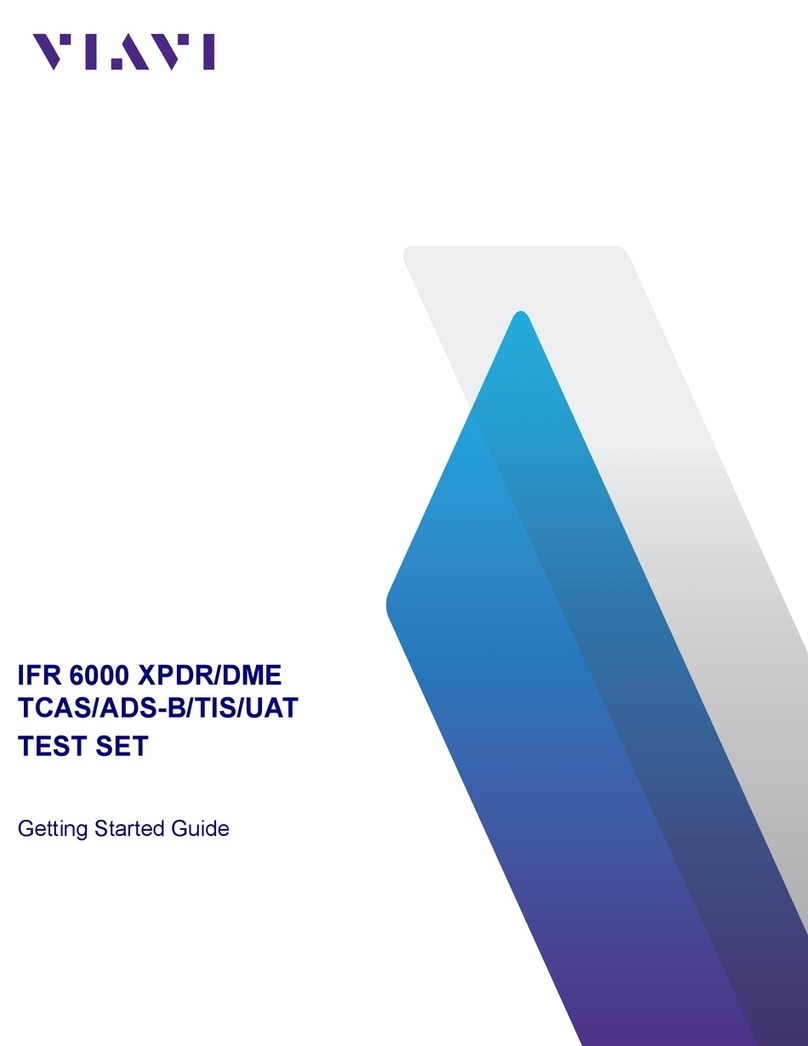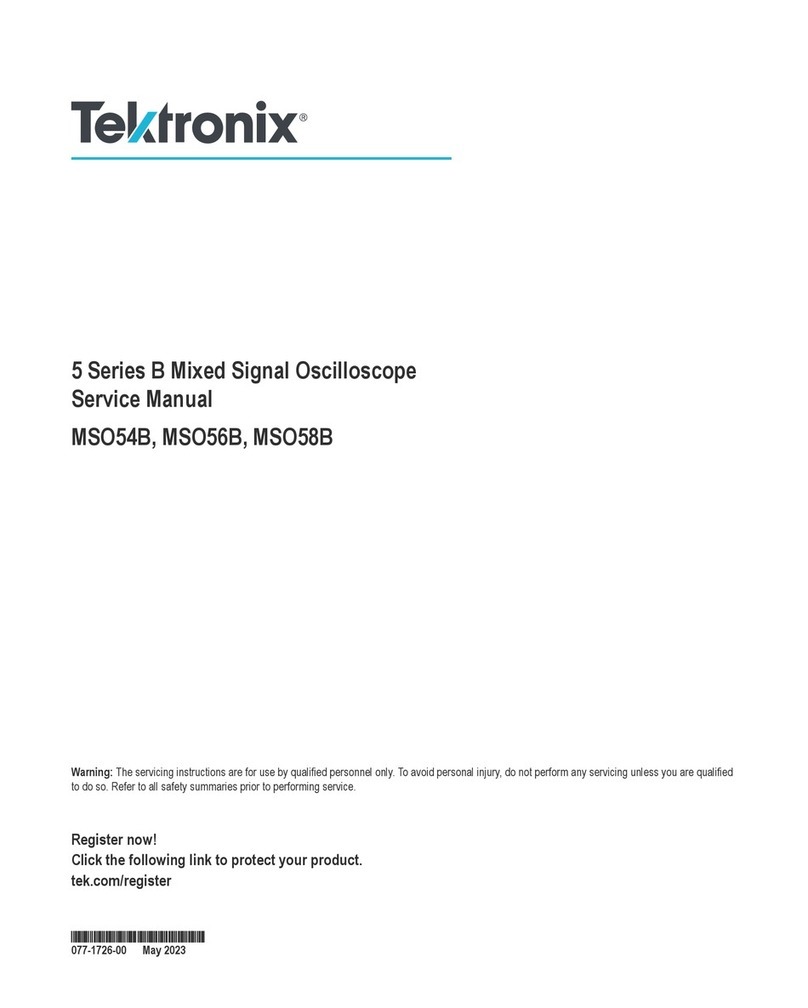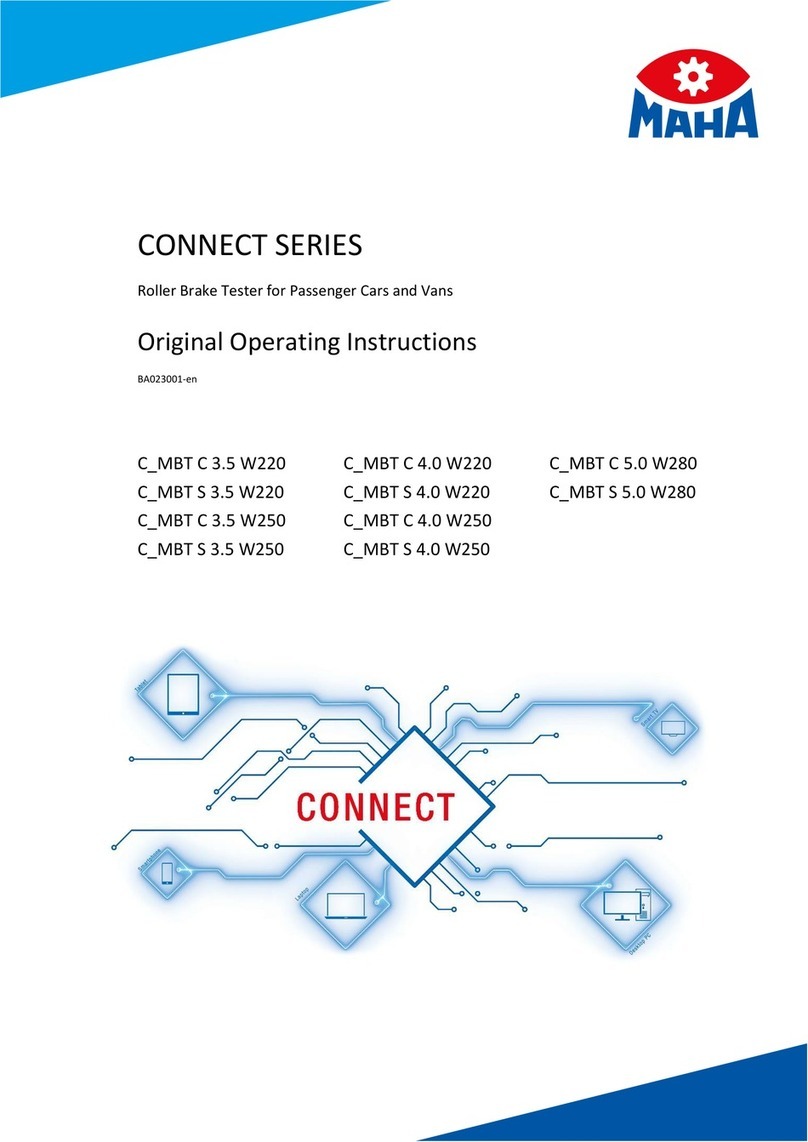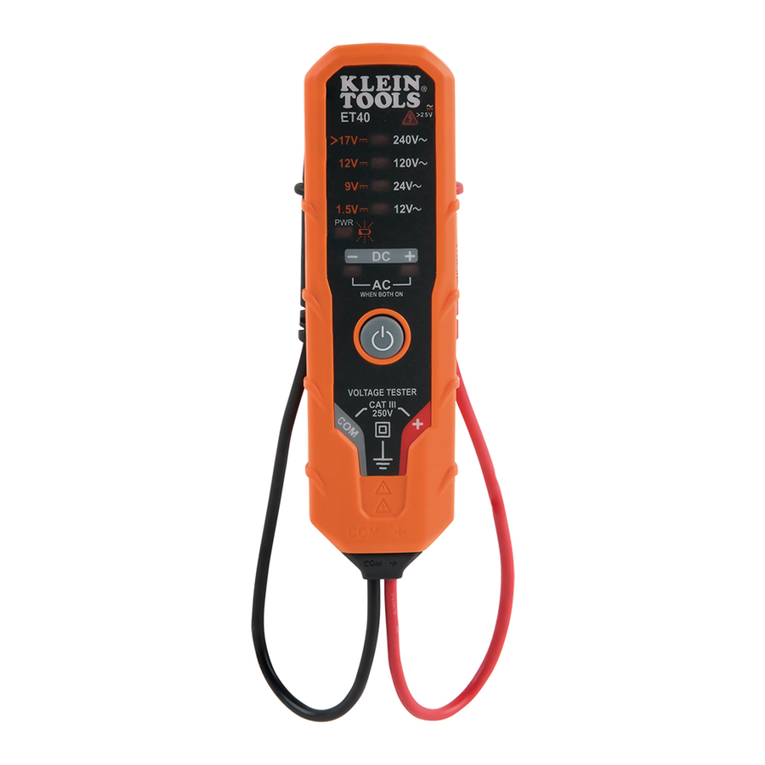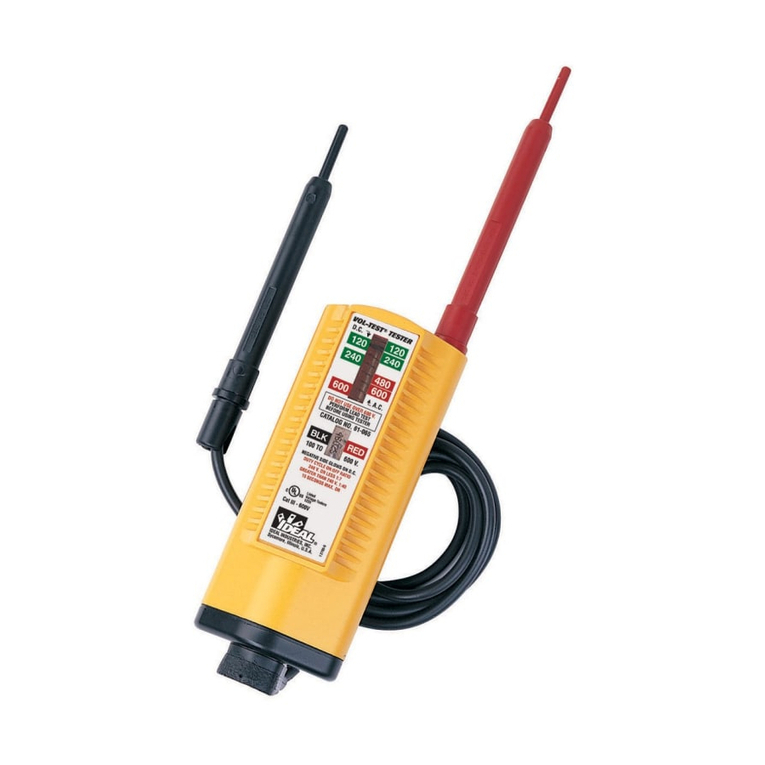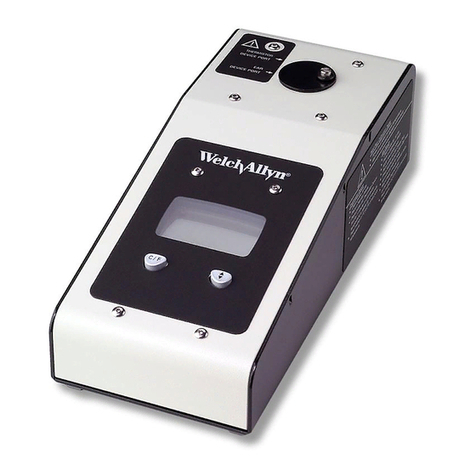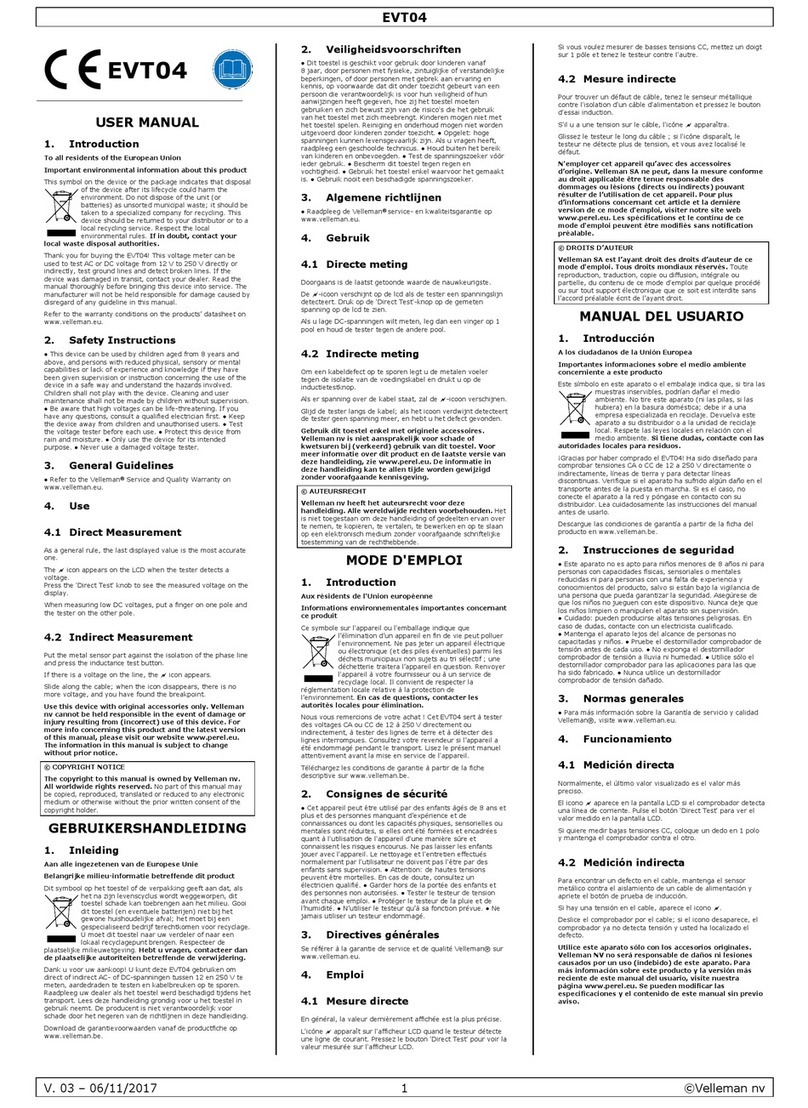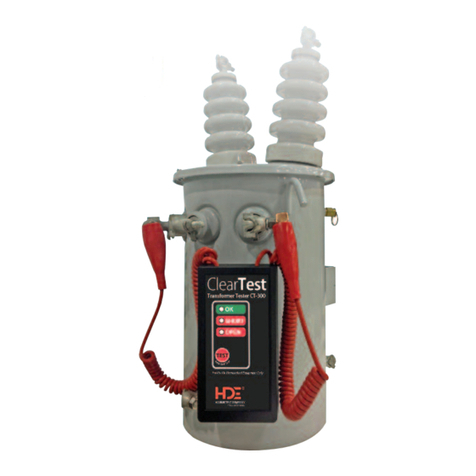Leagend T86 User manual

Auto Scanner
OBDII/EOBD+BMW
User’s Manual
Item: T86


USER’S MANUAL
OBDII Auto Scanner
2
Table of Contents
1. Safety Precautions and Warnings ..................................................................... 3
2. General Information .......................................................................................... 3
2.1 On-Board Diagnostics (OBD) II ...................................................................... 3
2.2 Diagnostic Trouble Codes (DTCs) .................................................................. 4
2.3 Location of the Data Link Connector (DLC) ................................................... 5
2.4 OBD II Readiness Monitors ............................................................................ 6
2.5 OBD II Monitor Readiness Status ................................................................... 7
2.6 OBD II Definitions ........................................................................................... 8
3. Using the Scan Tool .......................................................................................... 9
3.1 Tool Description .............................................................................................. 9
3.2 Specifications ................................................................................................ 10
3.3 Accessories included .................................................................................... 10
3.4 Power supply ................................................................................................. 10
3.5 Tool setup ...................................................................................................... 11
3.6 Vehicle coverage ........................................................................................... 13
4. Operation ......................................................................................................... 13
4.1 Connection .................................................................................................... 13
4.2 Diagnostic ..................................................................................................... 14
4.2.1 Read Codes ............................................................................................... 15
4.2.2 Erase Codes .............................................................................................. 16
4.2.3 I/M Readiness ............................................................................................ 17
4.2.4 Data Stream ............................................................................................... 18
4.2.5 View Freeze Frame ..................................................................................... 21
4.2.6 O2 sensor test ............................................................................................ 22
4.2.7 On-board monitor test ................................................................................ 24
4.2.8 EVAP System Test ..................................................................................... 25
4.2.9 Vehicle Info ................................................................................................. 25
4.3 BMW Diagnose ............................................................................................. 26
4.4 Code lookup .................................................................................................. 30
4.5 Review History .............................................................................................. 30
4.6 Help ............................................................................................................... 32
5. Warranty and Service ...................................................................................... 33
5.1 Limited One Year Warranty ............................................................................ 33
5.2 Service Procedures ....................................................................................... 33

USER’S MANUAL
OBDII Auto Scanner
3
1. Safety Precautions and Warnings
To prevent personal injury or damage to vehicles and/or the scan
tool, read this instruction manual first and observe the following safety
precautions at a minimum whenever working on a vehicle:
1. Always perform automotive testing in a safe environment.
2. Wear safety eye protection that meets ANSI standards.
3. Keep clothing, hair, hands, tools, test equipment, etc. away from all
moving or hot engine parts.
4. Operate the vehicle in a well ventilated work area: Exhaust
gases are poisonous.
5. Put blocks in front of the drive wheels and never leave the
vehicle unattended while running tests.
6. Use extreme caution when working around the ignition coil,
distributor cap, ignition wires and spark plugs. These components
create hazardous voltages when the engine is running.
7. Put the transmission in PARK (for automatic transmission) or
NEUTRAL (for manual transmission) and make sure the parking
brake is engaged.
8. Keep a fire extinguisher suitable for gasoline/chemical/electrical
fires nearby.
9. Don't connect or disconnect any test equipment while the ignition
is on or the engine is running.
10. Keep the scan tool dry, clean, free from oil/water or grease. Use
a mild detergent on a clean cloth to clean the outside of the
scan tool, when necessary.
2. General Information
2.1 On-Board Diagnostics (OBD) II
The first generation of On-Board Diagnostics (called OBD I) was

USER’S MANUAL
OBDII Auto Scanner
4
developed by the California Air Resources Board (ARB) and
implemented in 1988 to monitor some of the emission control components
on vehicles. As technology evolved and the desire to improve the On-
Board Diagnostic system increased, a new generation of On-Board
Diagnostic system was developed. This second generation of On-Board
Diagnostic regulations is called "OBD II".
The OBD II system is designed to monitor emission control systems
and key engine components by performing either continuous or periodic
tests of specific components and vehicle conditions. When a problem is
detected, the OBD II system turns on a warning lamp (MIL) on the vehicle
instrument panel to alert the driver typically by the phrase of "Check
Engine" or "Service Engine Soon". The system will also store important
information about the detected malfunction so that a technician can
accurately find and fix the problem. Here below follow three pieces of such
valuable information:
1). If Malfunction Indicator Light (MIL) is commanded 'on' or 'off';
2). Which, if any, Diagnostic Trouble Codes (DTCs) are stored;
3) Readiness Monitor status.
2.2 Diagnostic Trouble Codes (DTCs)
OBD II Diagnostic Trouble Codes are codes that are stored by the on-
board computer diagnostic system in response to a problem found in the
vehicle. These codes identify a particular problem area and are intended
to provide you with a guide as to where a fault might be occurring
within a vehicle. OBD II Diagnostic Trouble Codes consist of a five-digit
alphanumeric code. The first character, a letter, identifies which control
system sets the code. The other four characters, all numbers, provide
additional information on where the DTC originated and the operating
conditions that caused it to set. Here below is an example to illustrate the
structure of digits:

USER’S MANUAL
OBDII Auto Scanner
5
DTC Example
P 0 2 0 2
Systems
B=Body
C=Chassis
P=Powertrain
U=Network
Code Type
Generic (SAE): Manufacturer Specific:
P0, P2, P34-P39 P1, P30-p33
B0, B3 B1, B2
C0, C3 C1, C2
U0, U3. U1, U2
Sub-systems
1= Fuel and Air Metering
2= Fuel and Air Metering
3= Ignition System or Engine Misfire
4= Auxiliary Emission Controls
5= Vehicle Speed Control and
Idle Controls
6= Computer Output Circuits
7= Transmission Controls
8= Transmission Controls
Identifying specific
malfunctioning section
of the systems
2.3 Location of the Data Link Connector (DLC)
The DLC (Data Link Connector or Diagnostic Link Connector) is the
standardized 16-cavity connector where diagnostic scan tools interface
with the vehicle's on-board computer. The DLC is usually located 12
inches from the center of the instrument panel (dash), under or around the
driver's side for most vehicles. If Data Link Connector is not located under
dashboard, a label should be there telling location. For some Asian and
European vehicles, the DLC is located behind the ashtray and the ashtray
must be removed to access the connector. If the DLC cannot be found,
refer to the vehicle's service manual for
the location.

USER’S MANUAL
OBDII Auto Scanner
6
2.4 OBD II Readiness Monitors
An important part of a vehicle's OBD II system is the Readiness
Monitors, which are indicators used to find out if all of the emissions
components have been evaluated by the OBD II system. They are running
periodic tests on specific systems and components to ensure that they are
performing within allowable limits.
Currently, there are eleven OBD II Readiness Monitors (or I/M Monitors)
defined by the U.S. Environmental Protection Agency(EPA). Not all
monitors are supported by all vehicles and the exact number of monitors
in any vehicle depends on the motor vehicle manufacturer's emissions
control strategy.
Continuous Monitors -- Some of the vehicle components or systems
are continuously tested by the vehicle's OBD II system, while others are
tested only under specific vehicle operating conditions. The continuously
monitored components listed below are always ready:
1. Misfire
2. Fuel System
3. Comprehensive Components (CCM)
Once the vehicle is running, the OBD II system is continuously
checking the above components, monitoring key engine sensors, watching
for engine misfire, and monitoring fuel demands.
Non-Continuous Monitors -- Unlike the continuous monitors, many
emissions and engine system components require the vehicle to be
operated under specific conditions before the monitor is ready. These
monitors are termed non-continuous monitors and are listed below:
1). EGR System
2). O2 Sensors
3). Catalyst
4). Evaporative System

USER’S MANUAL
OBDII Auto Scanner
7
5). O2 Sensor Heater
6). Secondary air
7). Heated Catalyst
8). A/C system
2.5 OBD II Monitor Readiness Status
OBD II systems must indicate whether or not the vehicle's PCM's
monitor system has completed testing on each component. Components
that have been tested will be reported as "Ready", or "Complete",
meaning they have been tested by the OBD II system. The purpose
of recording readiness status is to allow inspectors to determine if the
vehicle's OBDII system has tested all the components and/or systems.
The powertrain control module (PCM) sets a monitor to "Ready" or
"Complete" after an appropriate drive cycle has been performed. The
drive cycle that enables a monitor and sets readiness codes to "Ready"
varies for each individual monitor. Once a monitor is set as "Ready" or
"Complete", it will remain in this state. A number of factors, including
erasing of diagnostic trouble codes (DTCs) with a scan tool or a
disconnected battery, can result in Readiness Monitors being set to "Not
Ready". Since the three continuous monitors are constantly evaluating,
they will be reported as "Ready" all of the time. If testing of a particular
supported non-continuous monitor has not been completed, the monitor
status will be reported as "Not Complete" or "Not Ready".
In order for the OBD monitor system to become ready, the vehicle
should be driven under normal operating conditions. These operating
conditions may include a mix of highway driving and stop and go, city type
driving, and at least one overnight-off period. For specific information on
getting your vehicle's OBD monitor system ready, please consult your
vehicle owner's manual.

USER’S MANUAL
OBDII Auto Scanner
8
2.6 OBD II Definitions
Powertrain Control Module (PCM) -- OBDII terminology for the on-board
computer that controls engine and drive train.
Malfunction Indicator Light (MIL) -- Malfunction Indicator Light (Service
Engine Soon, Check Engine) is a term used for the light on the instrument
panel. It is to alert the driver and/or the repair technician that there is a
problem with one or more of vehicle's systems and may cause emissions
to exceed federal standards. If the MIL illuminates with a steady light, it
indicates that a problem has been detected and the vehicle should be
serviced as soon as possible. Under certain conditions, the dashboard
light will blink or flash. This indicates a severe problem and flashing is
intended to discourage vehicle operation. The vehicle onboard diagnostic
system can not turn the MIL off until necessary repairs are completed or
the condition no longer exists.
DTC -- Diagnostic Trouble Codes (DTC) that identify which section of the
emission control system has malfunctioned.
Enabling Criteria --Also termed Enabling Conditions.They are the
vehicle-specific events or conditions that must occur within the engine
before the various monitors will set, or run. Some monitors require the
vehicle to follow a prescribed "drive cycle" routine as part of the enabling
criteria. Drive cycles vary among vehicles and for each monitor in any
particular vehicle.
OBD II Drive Cycle -- A specific mode of vehicle operation that provides
conditions required to set all the readiness monitors applicable to the
vehicle to the "ready" condition. The purpose of completing an OBD II
drive cycle is to force the vehicle to run its onboard diagnostics. Some
form of a drive cycle needs to be performed after DTCs have been erased
from the PCM's memory or after the battery has been disconnected.
Running through a vehicle's complete drive cycle will set the readiness
monitors so that future faults can be detected. Drive cycles vary depending

USER’S MANUAL
OBDII Auto Scanner
9
on the vehicle and the monitor that needs to be reset. For vehicle specific
drive cycle, consult the vehicle's Owner's Manual.
Freeze Frame Data -- When an emissions related fault occurs, the OBD
II system not only sets a code but also records a snapshot of the vehicle
operating parameters to help in identifying the problem. This set of values
is referred to as Freeze Frame Data and may include important engine
parameters such as engine RPM, vehicle speed, air flow, engine load,
fuel pressure, fuel trim value, engine coolant temperature, ignition timing
advance, or closed loop status.
3. Using the Scan Tool
1
2
4
8
6
3
9
7
5

USER’S MANUAL
OBDII Auto Scanner
10
3.2 Specifications
Screen: 2.8" TFT color screen.
Input voltage range: 8~32V
Operating temperature: 32_~122 C
Storage temperature: -4 ~158_ / -20 ~70 C
Outline dimension: 20*8.5*2.8CM
Weight : <17.6 oz (500g)
3.3 Accessories Included
User Manual -- Show the user how to operate the tool.
CD -- Include the software.
USB cable -- Connect to a computer for upgrading online.
3.4 Power supply
The power of the Car scanner is provided via the vehicle Data Link
Connector (DLC). Follow the steps below to power it up:
A. Find DLC on vehicle: A plastic DLC cover may be found for some
vehicles and you need to remove it before plugging the OBDII cable.
B. Plug the connector at the end of OBD II cable to the vehicle.
3.1 Tool Description
1. LCD DISPLAY -- Indicates test information.
2. ENTER BUTTON--Confirms a selection (or action) from a menu.
3. ESC BUTTON -- Returns to previous menu.
4/5. RIGHT/LEFT BUTTONs -- Move cursor right or left for selection; Or
turn page up or down when more than one page is displayed.
6/7. UP/DOWN BUTTONs-- Move cursor up or down for selection.
8.POWER SWITCH -- Turns on/off the scan tool when powered by cell
battery; resets the scanner when powered by vehicle battery.
9. OBD II CONNECTOR -- Connects the AUTO SCANNER to the vehicle.

USER’S MANUAL
OBDII Auto Scanner
11
You can press [UP] [DOWN] key to select any language and press [ENTER]
to confirm. The system will convert to the chosen language interface at
once.
2). Unit of measure.
Choose [Unit of measure] and press [ENTER], the screen will display the
interface as shown below:
con.
Tool Setup
Language
Unit of measure
Beeper
Record mode
to make the following adjustments, settings:
1). Select language: Selects desired language.
Choose [Language] and press [ENTER], the screen will display the
interface as shown below:
con.
Language
English
3.5 Tool Setup
Select [Tool Setup] in the Main Menu and press [ENTER], the screen will
display the interface as shown below:

USER’S MANUAL
OBDII Auto Scanner
12
Press [UP] or [DOWN] to select ON/OFF and press [ENTER] to confirm.
4). Record: ON/OFF the Record.
Choose [Record More] and press [ENTER], the screen will display the
interface as shown below:
con.
Record More
ON
con.
Unit of measure
Flow lb/min
Speed mph
Distance miles
Pressure 1 psi
Pressure 2 inHg
Pressure 3 inH20
Pressure 4 inH20
Press [UP] or [DOWN] to select it and press [LEFT] and [RIGHT] to
change, then press [ENTER] to confirm.
3). Beeper: ON/OFF the Beeper.
Choose [Beep] and press [ENTER], the screen will display the interface as
shown below: con.
Beeper
ON

USER’S MANUAL
OBDII Auto Scanner
13
4. OPERATION
4.1 Connection
1). Turn the ignition off.
2). Locate the vehicle
3). Plug the OBDII cable into the vehicle
4). Turn the ignition on. Engine can be off or running.
After finishing, press [ENTER] button to enter Main Menu as following
picture:
3.6 Vehicle Coverage
This model OBDII/EOBD Scanner is specially designed to work with all
OBD II compliant vehicles, including those equipped with next-generation
protocol -- Control Area Network (CAN). It is required by EPA that all 1996
and newer vehicles (cars and light trucks) sold in the world must be OBD
II compliant and this includes all America, Asian and European vehicles.
A small number of 1994 and 1995 model year gasoline vehicles are
OBD II compliant. To verify if a 1994 or 1995 vehicle is OBD II compliant,
check the Vehicle Emissions Control Information (VECI) Label which is
located under the hood or by the radiator of most vehicles. If the vehicle is
OBD II compliant, the label will designate "OBDII Certified". Additionally,
Government regulations mandate that all OBDII compliant vehicles must
have a "common" sixteen-pin Data Link Connector (DLC).
For your vehicle to be OBD II compliant it must have a 16-pin DLC
(Data Link Connector) under the dash and the Vehicle Emission Control
Information Label must state that the vehicle is OBD II compliant.
OBDII 16 pin, BMW series 1-8, I/X/Z, Mini after 2000, all 150 systems,
including Engine, A/T, ABS, ACC, ARS, SRS, EML, A/C, Baterry, BFS,
BZM, CA,CAS, CEM, etc.
Press [UP] or [DOWN] to select ON/OFF and press [ENTER] to confirm.
When this function is ON, and the icon record Datastream and record
Freeze Frames.

USER’S MANUAL
OBDII Auto Scanner
14
Press [ESC] to back to the Main Menu of Diagnostic, the screen will
display as following.
con.
Mo nitor Status
MIL status OFF
DTCs in this ECU 5
Readiness supported 6
Readiness complete 0
Readiness not supported 4
Datastream supported 20
Ignition Spark
Protocol type VPW
4.2 OBDII Diagnose
Select [OBDII Diagnose] in Main Menu and press [ENTER], the screen will
display Monitor Status interface as following.
CAUTION: Don't connect or disconnect any test equipment with ignition on
engine running.
con.
Main Menu
OBDII DIAGNOSE
BMW
DTC LOOKUP
REVIEW HISTORY
TOOL SETUP
HELP

USER’S MANUAL
OBDII Auto Scanner
15
According to the above figure to select different item by pressing [UP] or
[DOWN] and press [ENTER] to confirm.
con.
Read Codes
Current DTCs ($03)
Pending DTCs($07)
Permanent DTCs($0A)
4.2.1 Read Codes
Select [Read Codes] and press [ENTER] in Diagnostic Menu. If there are
some codes, the screen will display the codes as shown below:
con.
Current DTC
P0143 1/3
O2 Sensor Circuit Low Voltage Bank 1 Sensor
3
con.
Di agnostic Menu
Read codes
Erase codes
I/M readiness
Data stream
Freeze frame
O2 sensor test
On-Board monitoring
EVAP system test

USER’S MANUAL
OBDII Auto Scanner
16
Press [ENTER] to erase DTC shown below:
According to the above figure to press [ENTER] and the screen will display
the interface as shown on the next page:
con.
Erase DTC
Clear / Reset Emission-Related
Diagnostic Information, Are you sure?
4.2.2 Erase Codes
Select [Erase Codes], the screen will display the interface as shown
below:
1/3 indicates there are 3 codes total and now P0143 is the first code to
display.
The screen will also show the content of the code below the number of
code.
You can use [ESC]key to view the next code.
After viewing all the codes, you can press [ESC] to return to the Diagnostic
Menu.
con.
Erase DTC
Please turn ignition ON with Engine
Off, press ENTER key to continue!

USER’S MANUAL
OBDII Auto Scanner
17
I/M Readiness
Since DTCs Were Cleared
This Drive Cycle
4.2.3 I/M Readiness
I/M refers to Inspection and Maintenance that is legislated by the
Government to meet federal clean-air standards. I/M Readiness
indicates if or not the various emissions-related systems on the vehicle
operating properly and ready for I/M testing.
The purpose of the I/M Readiness Monitor Status is to indicate which of
the vehicle described in Chapter 2.5), and which ones have not yet run
and completed testing and diagnosis of their designated sections of the
vehicle system.
The I/M Readiness Monitor Status function also can be used (after
repair of a fault has been performed) to confirm that the repair has been
performed correctly, and/or to check for Monitor Run Status.
Select [I/M Readiness] and press [ENTER], the screen will display the
interface as shown below:
Notes:
Before performing this function, make sure to retrieve and record the
trouble codes.
After clearing, you should retrieve trouble codes once more or turn
ignition on and retrieve codes again. If there are still some trouble codes in
the system, please troubleshoot the code using a factory diagnosis guide,
then clear the code and recheck.
Erase DTC
Emission-Related Diagnostic
Information has been Cleared!

USER’S MANUAL
OBDII Auto Scanner
18
Datas tream
View All Items
Select Items
View Graphic Items
4.2.4 Data Stream
Press [UP] or [DOWN] button to select Data Stream in Main Menu
interface and then press [ENTER] button to confirm, the screen will display
the interface as shown below:
You can use [LEFT ] [RIGHT ] button to view other data of vehicle. Press
[ENTER] to return to Diagnostic Menu.
N/A means not available on this vehicle, INC means incomplete or not
ready, OK means Completed or Monitor OK.
con.
I/ M Readiness
Misfire monitor OK
Fuel system monitor N/A
Comprehensive component monitor OK
Catalyst monitor OK
Heated catalyst monitor N/A
Evaporative system monitor OK
Secondary air system monitor N/A
Oxygen sensor monitor OK
Oxygen sensor heater monitor N/A
EGR and/or VVT sensor monitor OK
1/2
You can use [UP] or [DOWN] button to select and press [ENTER], the
screen will display the interface as shown below:

USER’S MANUAL
OBDII Auto Scanner
19
con.
Al l Datastream
Fuel system 1 status N/A
Fuel system 2 status N/A
Calculated LOAD value 2.0%
Engine coolant temperature -35 C
Short term fuel trim - bank 4 -36.1%
con.
Sel ect Datastream
[ ] Fuel system 1 status
[ ] Fuel system 2 status
[ ] Calculated LOAD value
[ ] Engine coolant temperature
[ ] Short term fuel trim - bank 4
1/8
1/1
Select [View All Items] and press [ENTER] button, the screen will display
the interface as shown below:
You can use [LEFT] [RIGHT] button to view other data streams. Press
[ENTER] to return to Diagnostic Menu.
Select [select Items] in Data stream menu and press [ENTER], the screen
will display the interface as shown below:
You can use [UP] [DOWN] button to select data stream items, and press
[LEFT ] [RIGHT] button to turn page, the screen will display the interface
as shown on the next page:
Table of contents
Other Leagend Test Equipment manuals
